RARE WWII 1942 Operation Torch Mateur Tunisia Assault Map Bradley’s II Corps
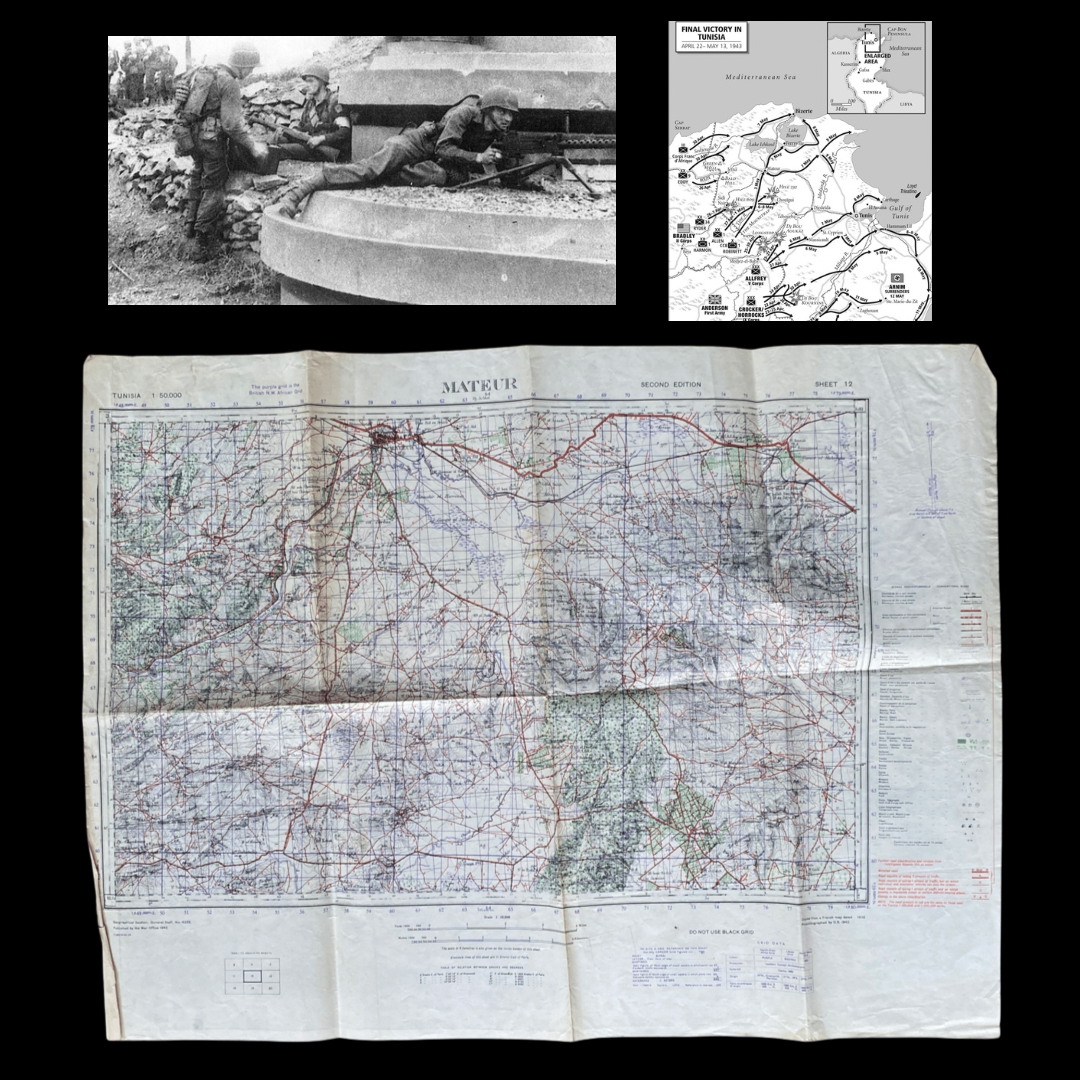




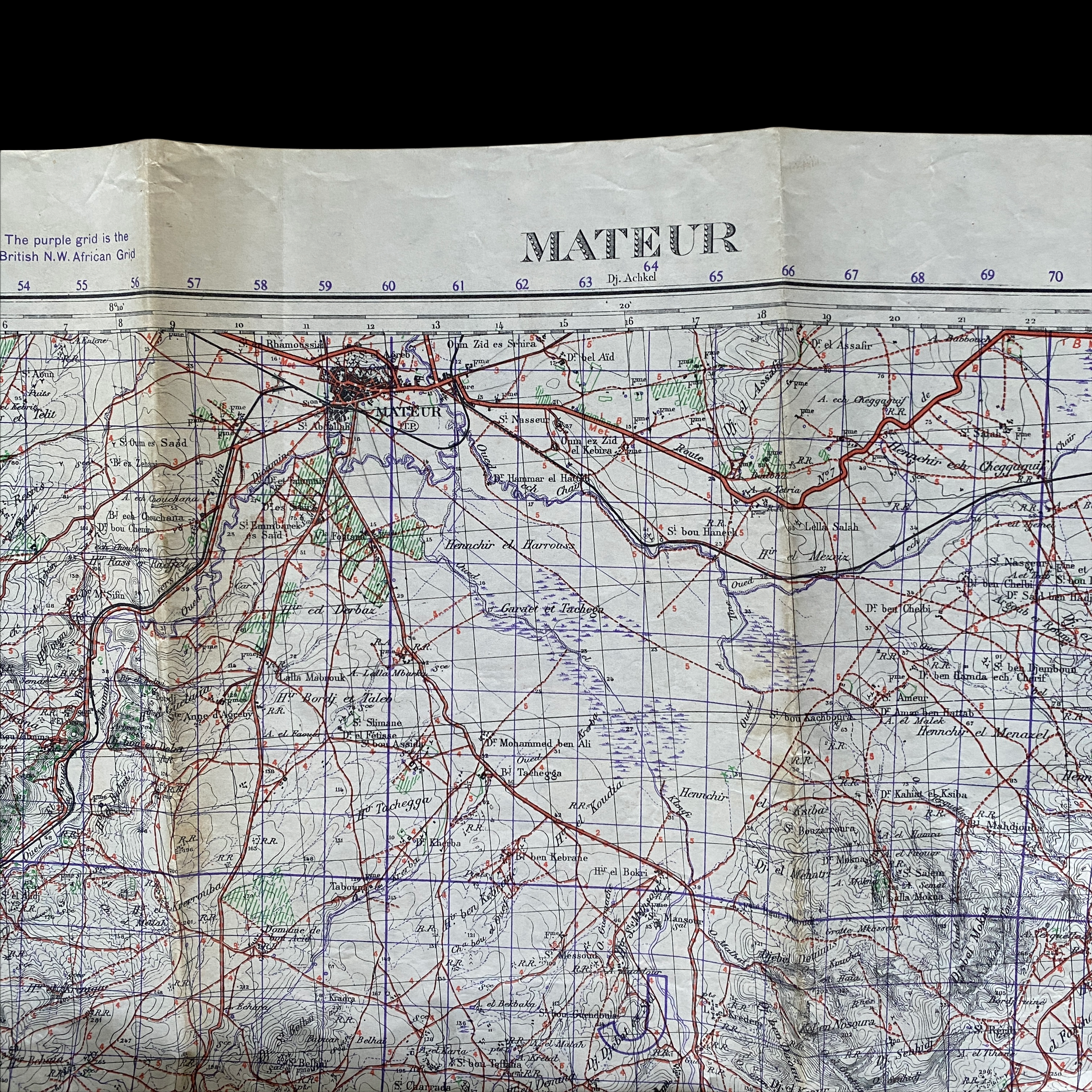
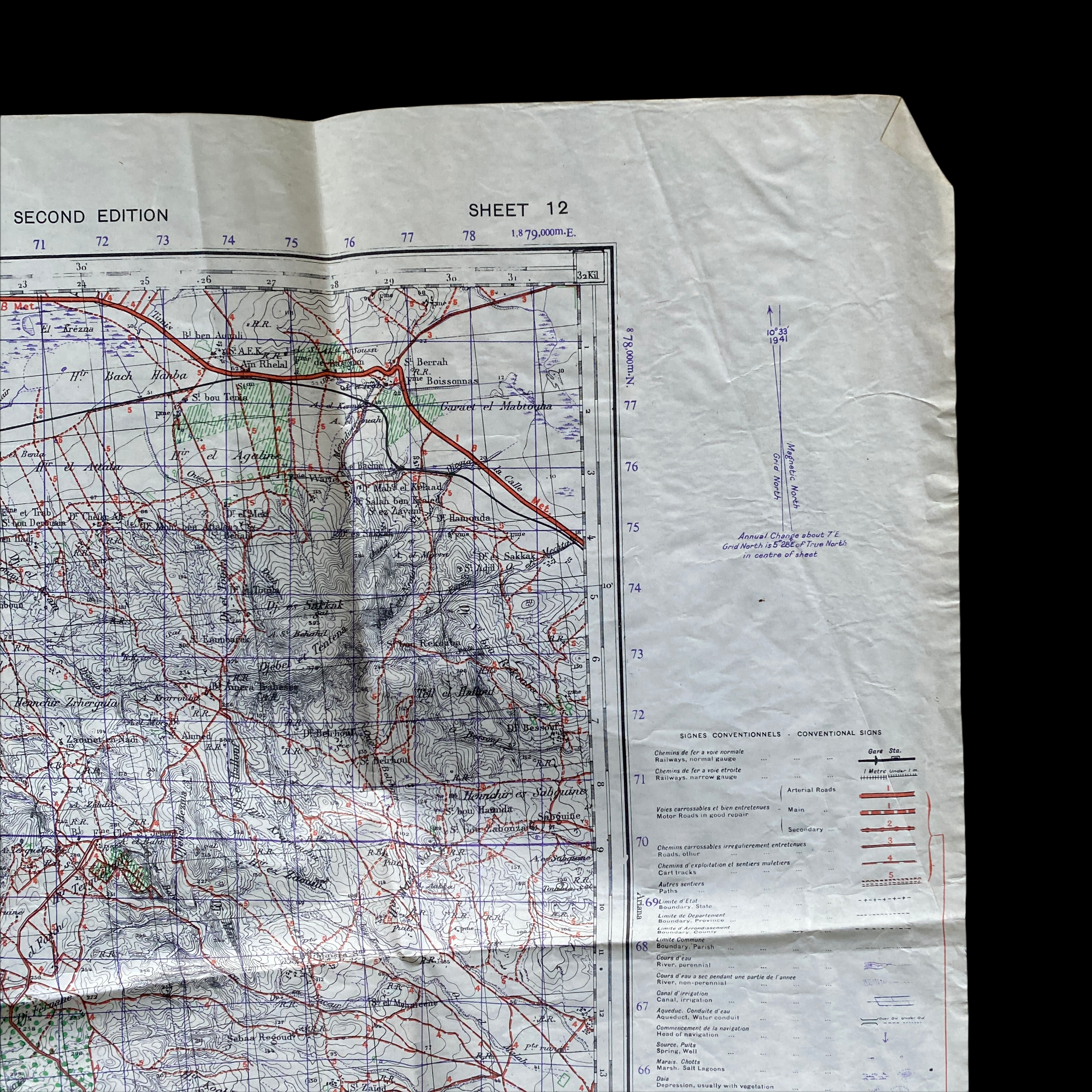

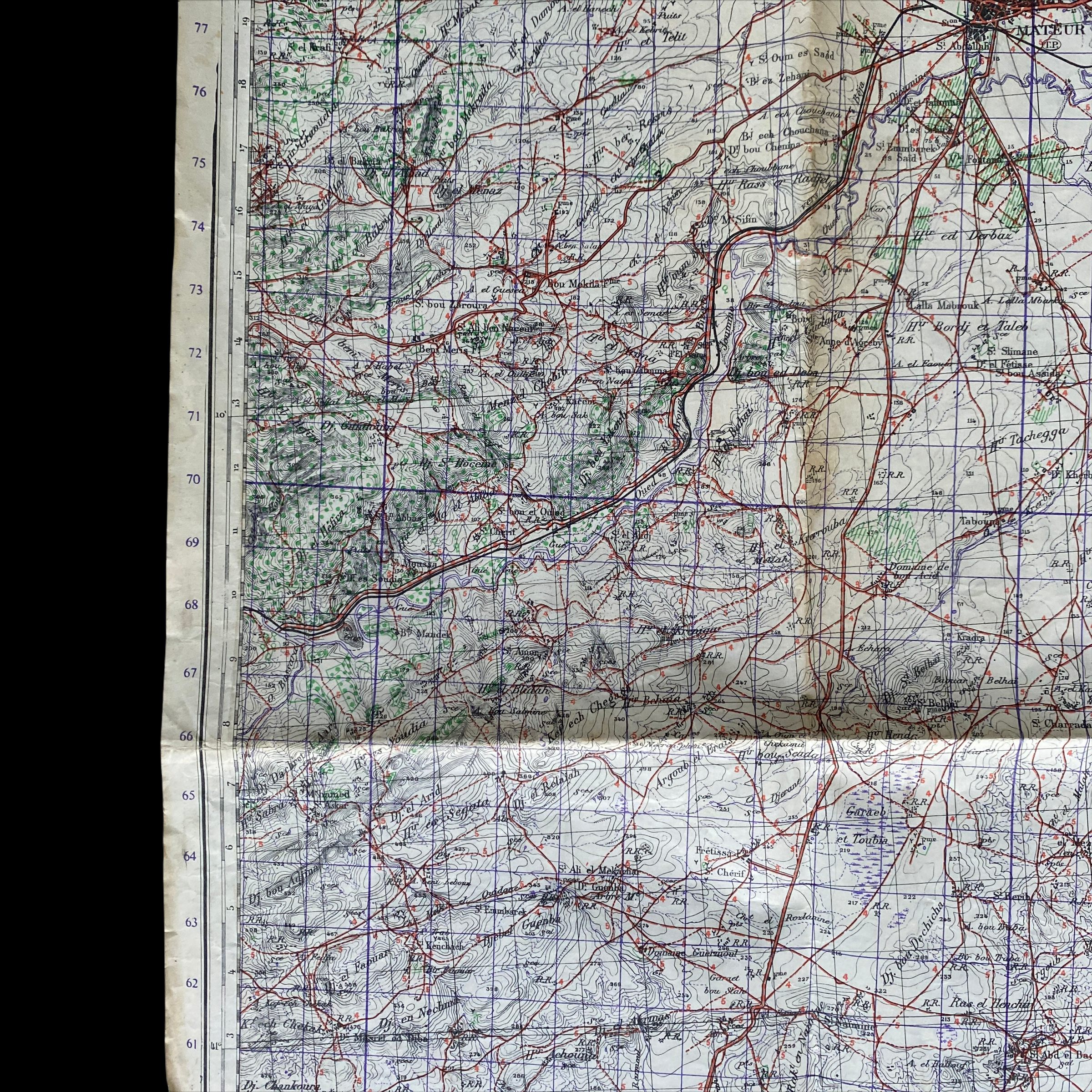
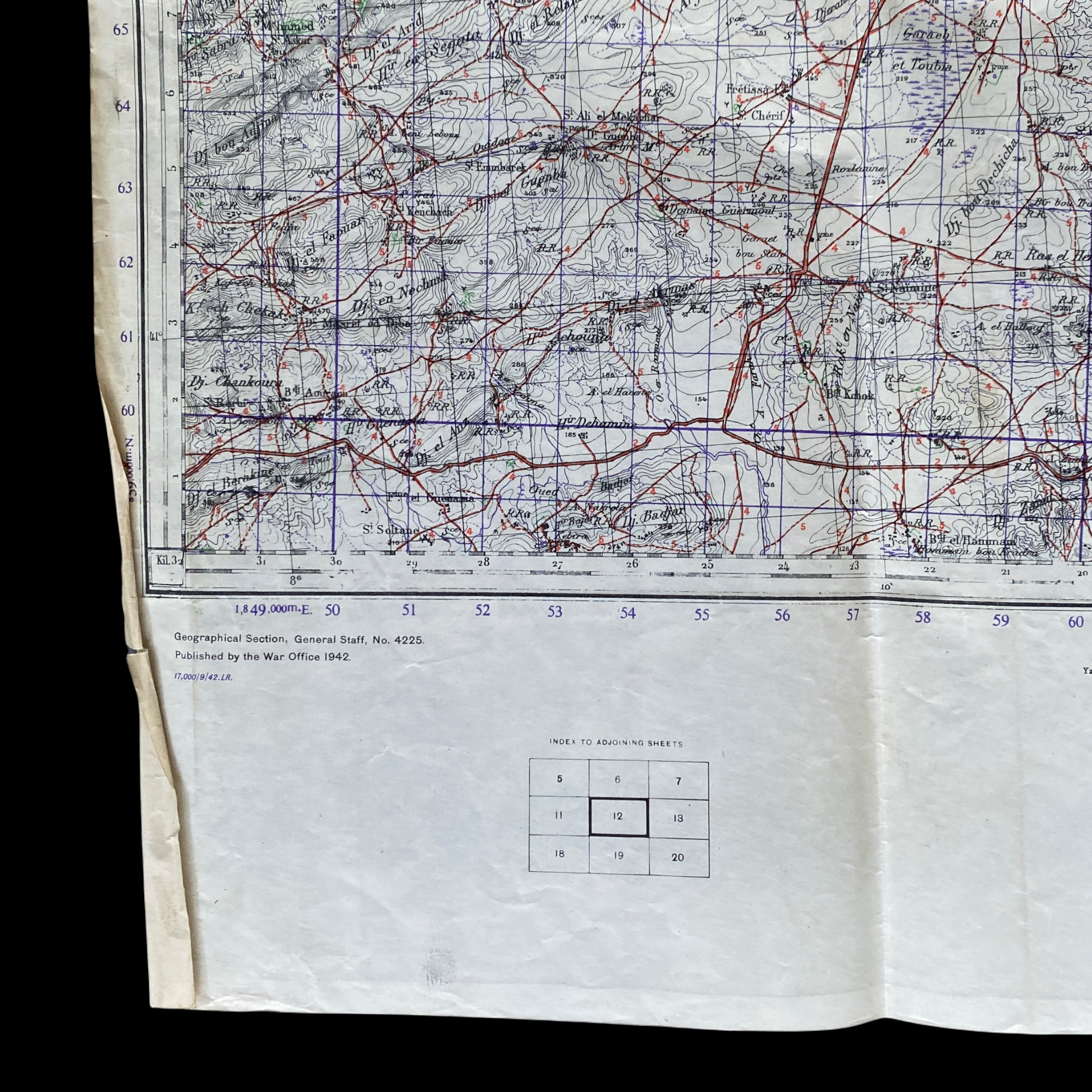

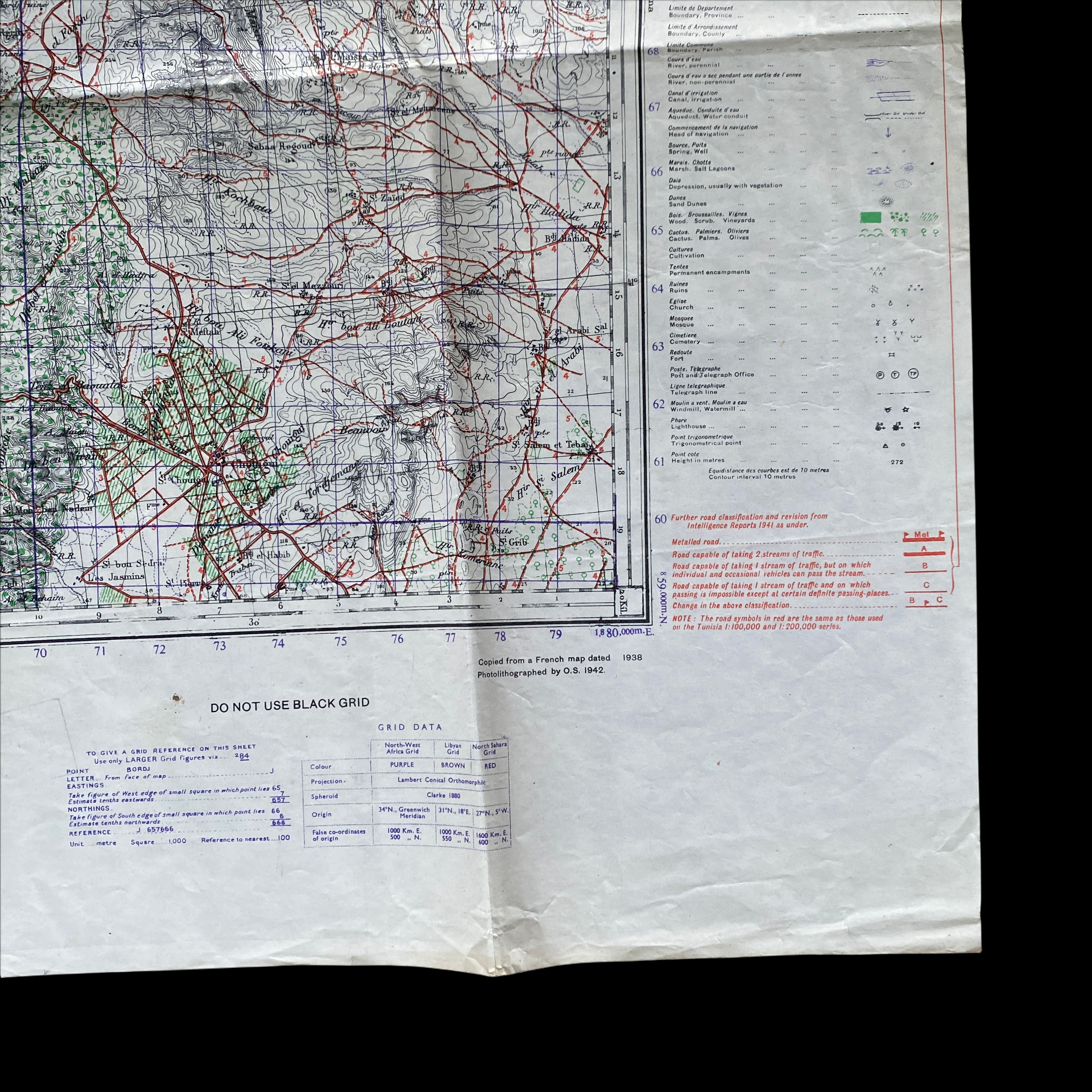


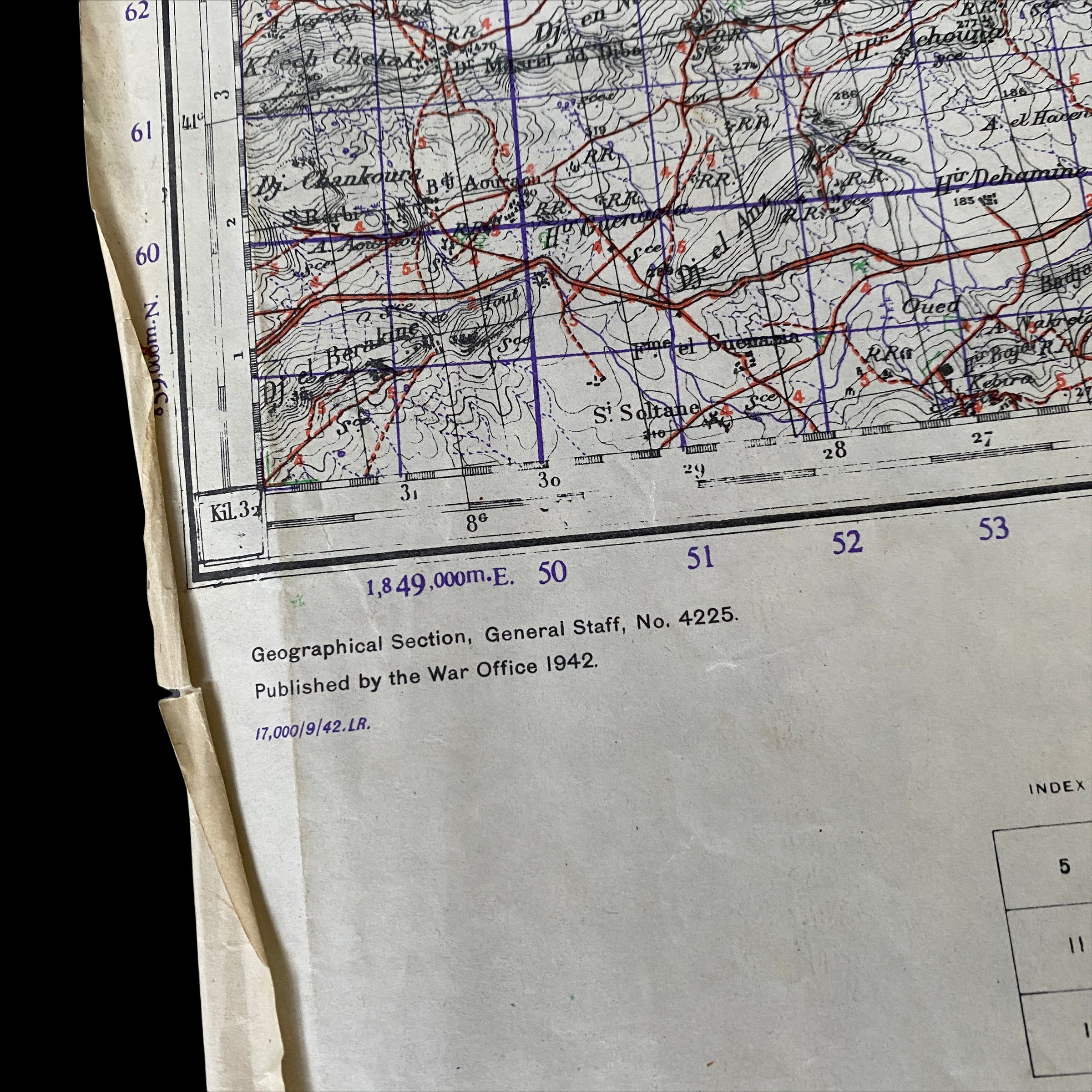

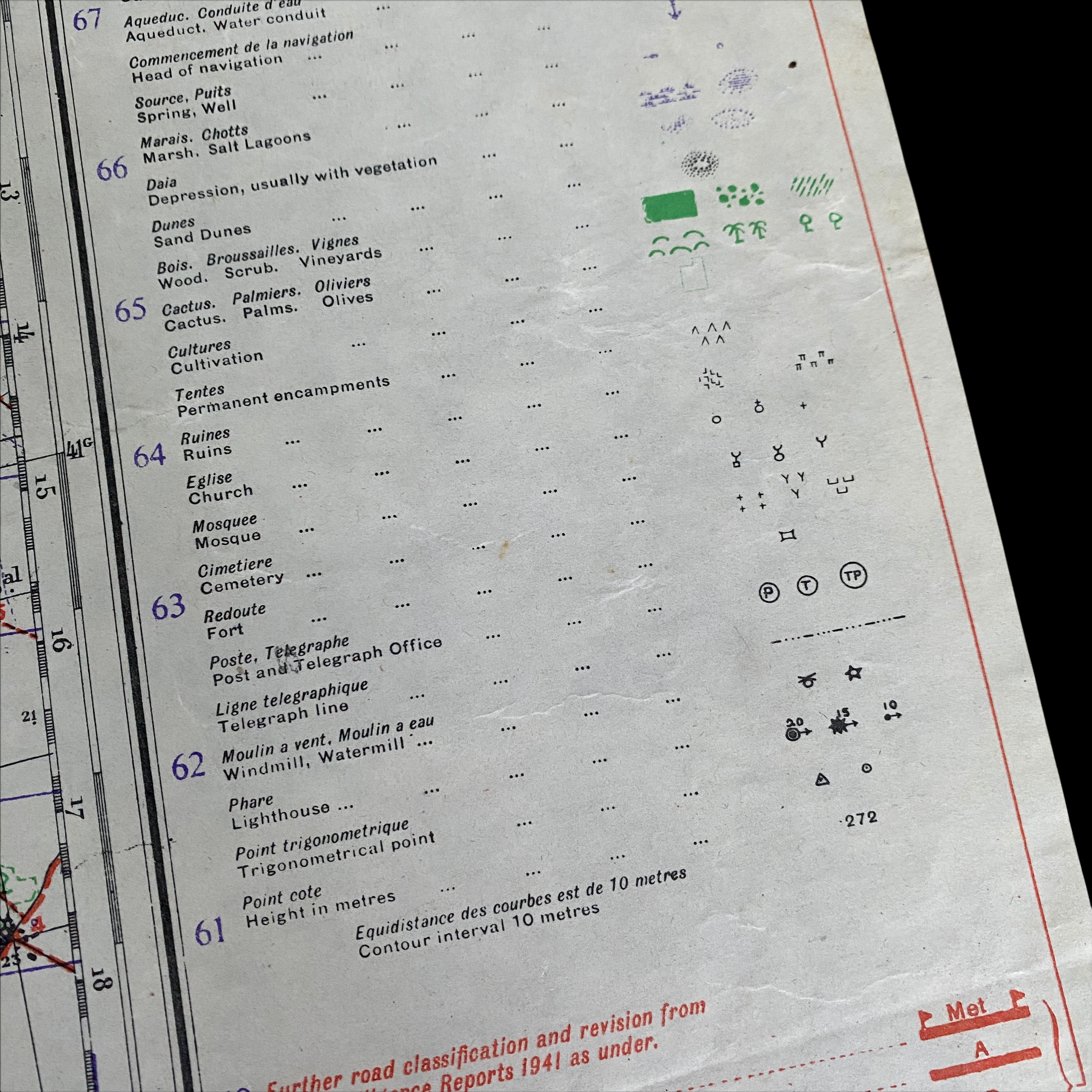




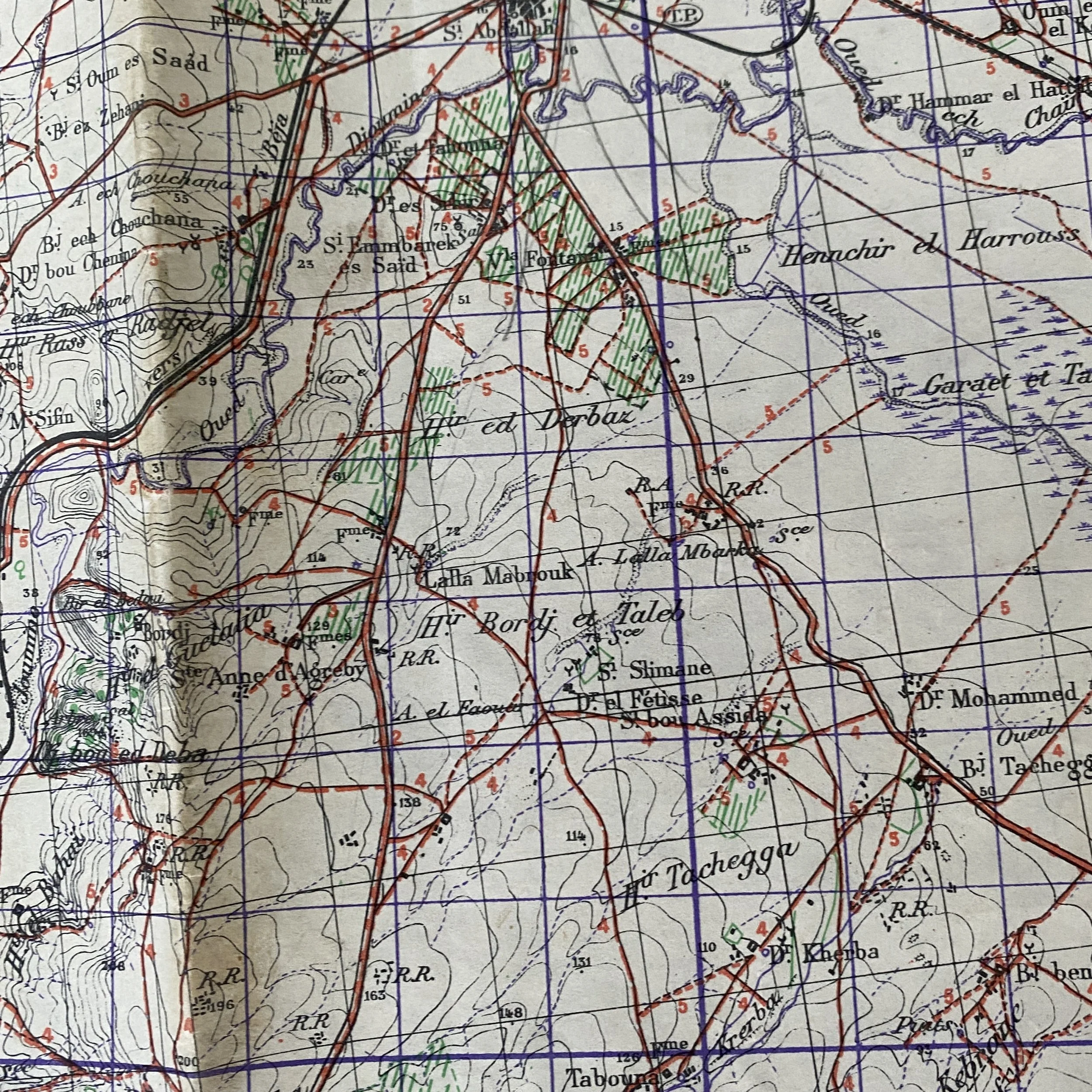
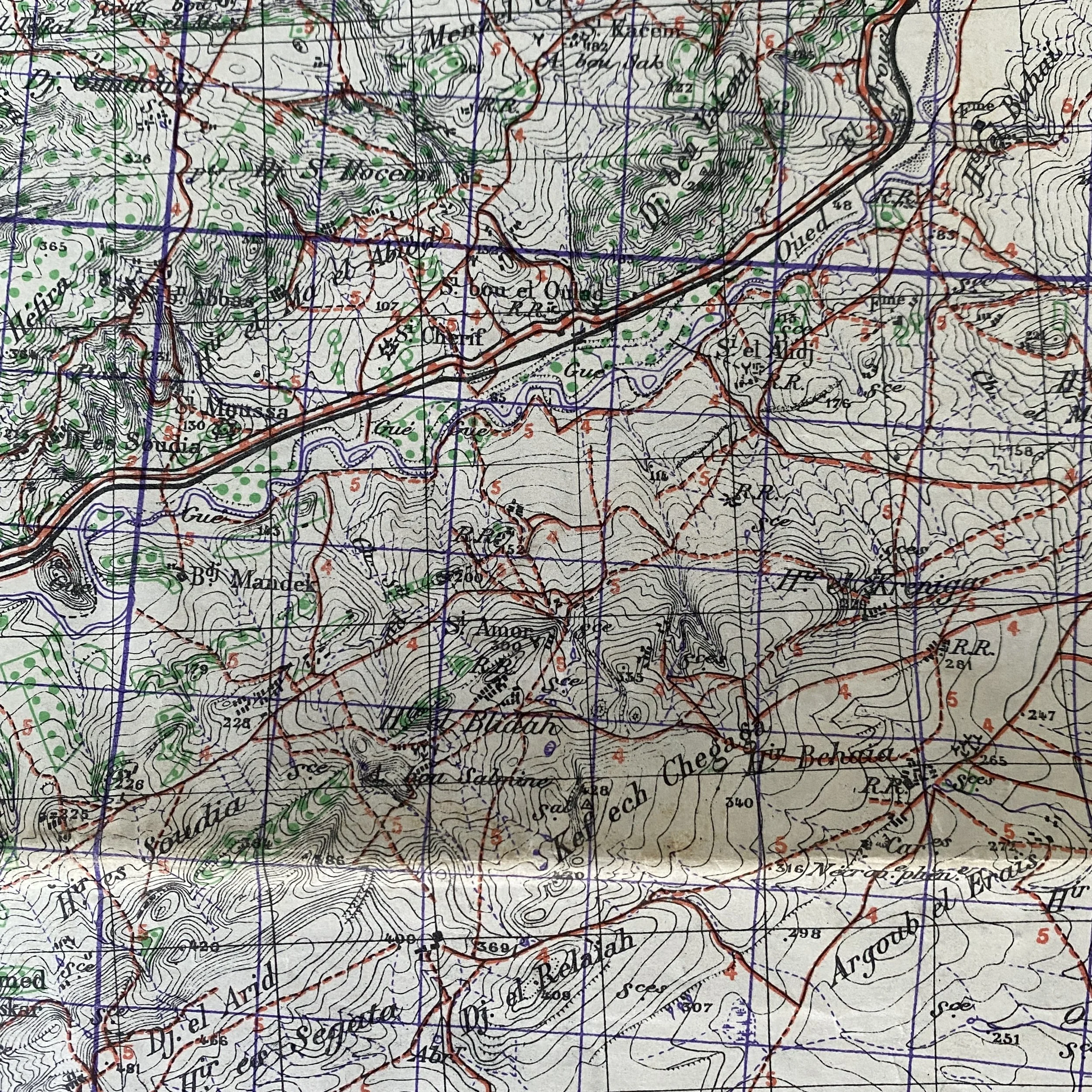





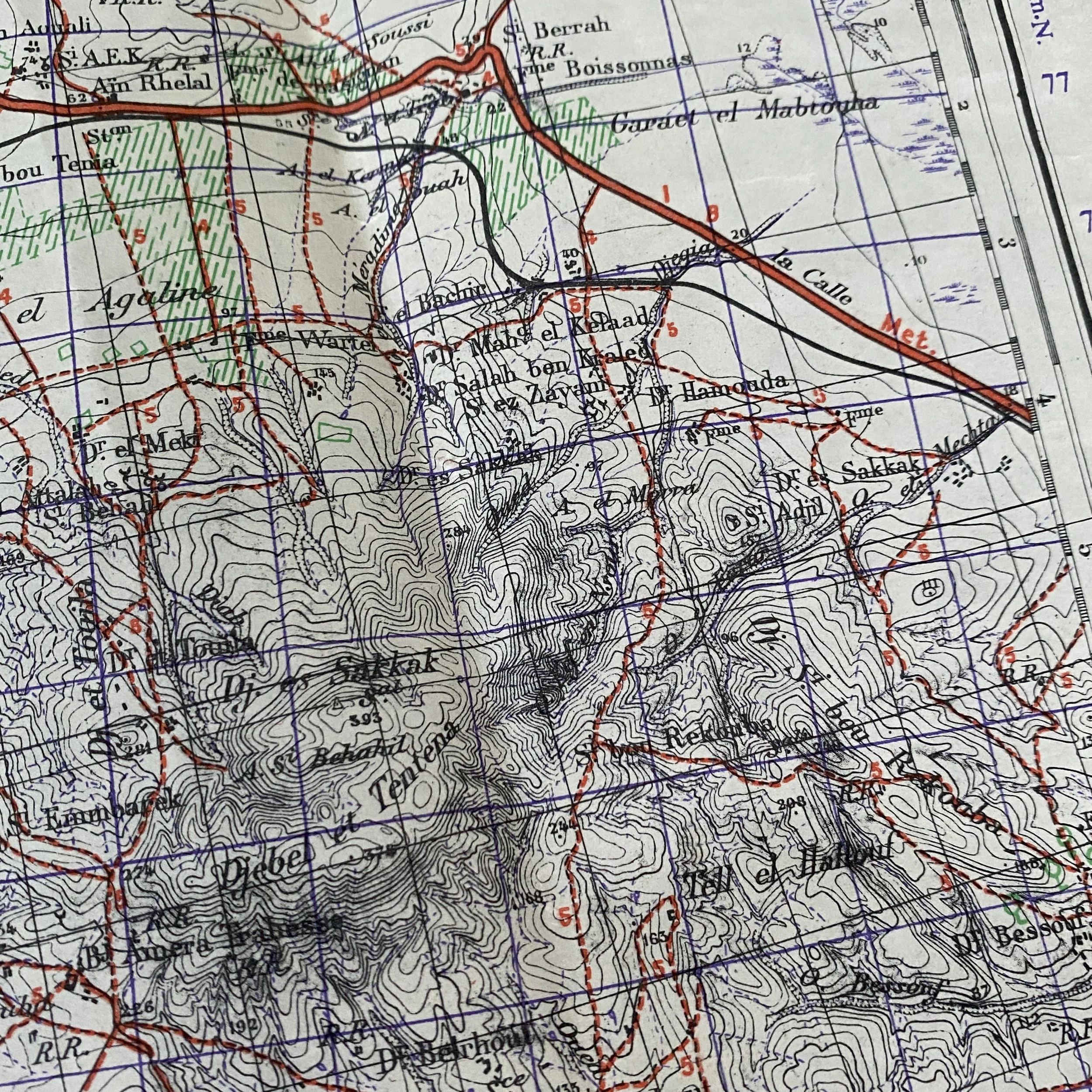
RARE WWII 1942 Operation Torch Mateur Tunisia Assault Map Bradley’s II Corps
Comes with C.O.A.
*Battle for Hill 232 and Hill 609
This incredible WWII operational assault map of the Tunisia region was used Operation Torch in Northern Africa during infamous “Race For Tunisia”. As Bradley’s II Corps (US) advanced against the German Afrika Korps towards Mateur the battlefields shown on this map were where some of the most intense fighting seen in the campaign occurred for the the US 1st Armored Division and 34th Infantry Division. Mateur was a vital victory for the Allies as it was the Germans' main supply base in the area.
The Americans attacked at dawn on 23 April in an explosion of artillery fire that lit up the eastern sky. Artillery and infantry were to play the major role in this last battle for Tunisia because Bradley was not willing to expend his tanks in valleys dominated by the enemy, which was entrenched on a succession of rocky hills. The fighting was a matter of attacking hill by hill, on both the 9th Division and the 1st Division fronts. The last major obstacle on the 1st Division sector was a white, soaring djebel known as Hill 609, northeast of the railhead at Sidi Nsir. Bradley brought up the 34th Division, which took the hill on 30 April. The way was then open for the 1st Armored Division to move to Mateur. To the north the 9th Division, advancing through a dense, breast-high thicket, outflanked the Germans' strong Djefna position. The enemy began to withdraw. Mateur fell on 3 May and after some regrouping, during which Bradley's command post advanced from Bédja to Sidi Nsir, II Corps resumed the attack on 6 May. The next day the forward halftracks of the 9th Division were clanking into the rubble-filled streets of Bizerte, the 1st Armored Division was occupying Ferryville, and British First Army tanks were entering Tunis. On 9 May the Axis forces in Tunisia surrendered.
The Tunisia Campaign lasted from November 17, 1942 – May 13, 1943 – (also known as the Battle of Tunisia) was a series of World War II battles that took place in Tunisia in the North African Campaign of World War II, between Axis and Allied forces. The Allies consisted primarily of American, British Imperial Forces and the French Army. The battle opened with initial success by the German and Italian forces, but the massive supply and numerical superiority of the Allies led to the Axis’ complete defeat. Over 230,000 German and Italian troops were taken as prisoners of war, including most of the Afrika Korps.
In July 1942, the Allies discussed relatively small-scale amphibious operations to land in northern France during 1942 (Operation Sledgehammer, which was the forerunner of Operation Roundup, the main landings in 1943), but agreed that these operations were impractical and should be deferred. Instead it was agreed that landings would be made to secure the Vichy territories in North Africa (Morocco, Algeria and Tunisia) and then to thrust east to take the Axis forces in the Western Desert in their rear. An Allied occupation of the whole of the North African coast would open the Mediterranean to Allied shipping, releasing the huge capacity required to maintain supplies around the circuitous route via the Cape of Good Hope. On 8 November, Operation Torch landed Allied forces in Algeria (at Oran and Algiers) and Morocco (at Casablanca) with the intention that once Vichy forces in Algeria had capitulated, an advance would be made to Tunis some 800 km (500 mi) to the east.